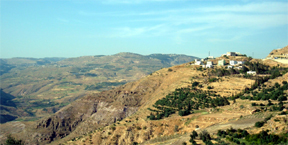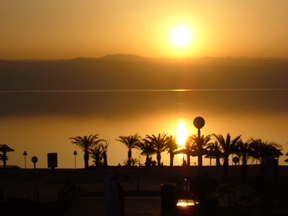
Amman

Roman ruins

From forest to Sahel to desert

Clay, Lans, Andrew

Sunset over the West Bank
 Amman |
 Roman ruins |
 From forest to Sahel to desert |
 Clay, Lans, Andrew |
 Sunset over the West Bank |
I recently had the opportunity to travel to Amman on a business trip. The first few days were spent going back and forth from hotel to office, but after the last meeting we had an afternoon and the following morning to explore. These photos were taken by Anadarko employee Clay Gaspar.
People have been living in Amman for at least 9000 years. Unlike Cairo whose cultural evolution is preserved in its architecture, Amman presents a consistent fašade of white limestone. Aside from the Roman ruins, I was challenged to differentiate old from new and found the city more disorienting than most. Despite the obvious political and religious turmoil in the greater area, we found the Jordanians friendly and considerate without fault, and thankfully were never confronted on the actions of our government.
Amman sits roughly 2500 ft above sea level on rolling forested topography. Heading west, one immediately plummets 4000 feet through the grasslands of the Sahel into desert. The shore of the Dead Sea, 1300 feet below sea level, is the lowest land on Earth. On the clear day we went, you could not separate sea from sky.
The Dead Sea valley, rich in religious mythology, appears to have changed little from the days when Moses allegedly saw the Promised Land from Mt. Nebo and Christ was baptized in the Jordan River. While I can not fathom the true nature of those events nor their profound impact on world history, I was pleased to find the valley home to shepherds and small farms. The infectious sprouting of mass produced ugliness that characterizes our modern age has cut through but not destroyed the rural character of this unique place.
Floating in the Dead Sea was a true hoot. Trapped on the interface between water and air, we bobbed on the surface and laughed out loud for a long time while the silhouette of Jerusalem ran across the water from the setting sun.